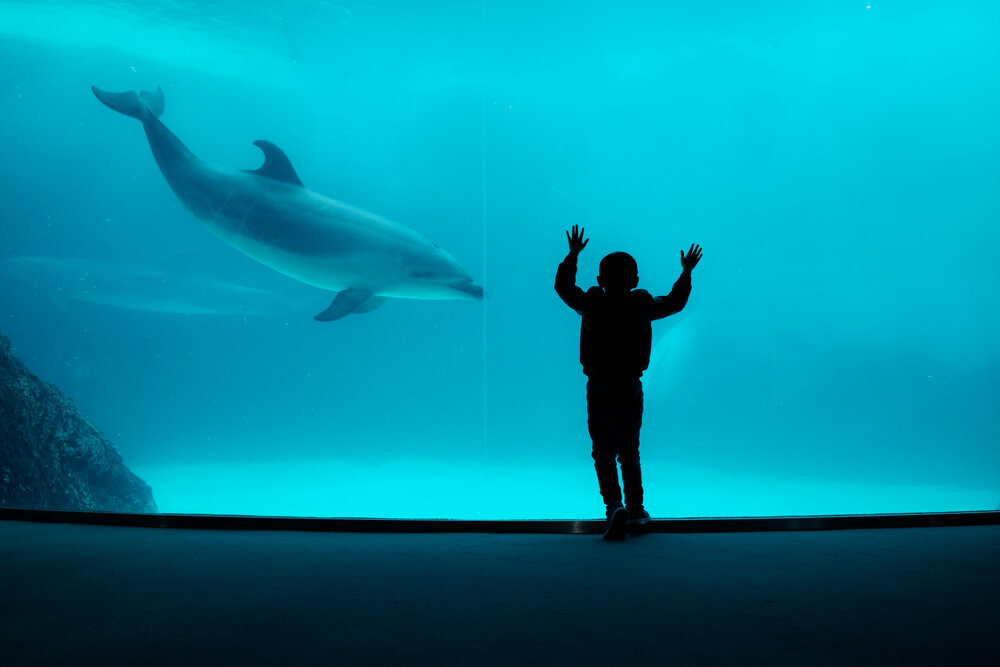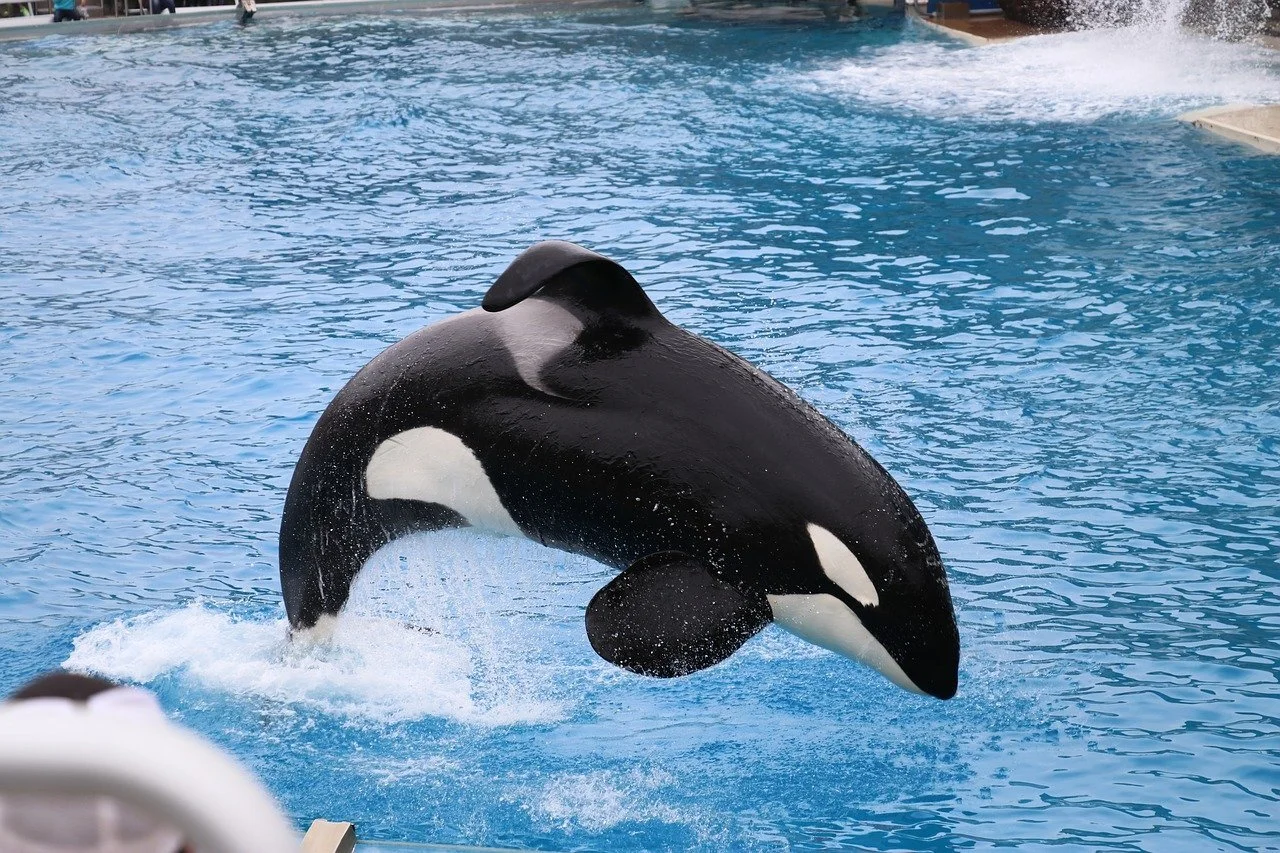
Whales & Dolphins in Captivity

Putting a Stop to Whale & Dolphin Captivity
Scientific research and anecdotal insight from marine park trainers has helped us understand a simple truth: That keeping whales and dolphins in captivity is cruel and inhumane.
The practice is admonished by governments and charities the world over. Keeping dolphins in captivity is an idea rejected by billions of people.
Yet to this day, captivity is found on every continent. In countries all around the world. As a global community, we’ve taken big strides towards a world where all whales and dolphins are free, but we’ve still got some way to go.
Today you can become be part of the journey to a world without whales and dolphins in captivity. We are the problem, which means we are also the solution.

Dolphins in Captivity: What We Can Be Proud Of
Whale & dolphin trade is illegal in many parts of the world
Whale & dolphin captures are illegal in most-all countries
Orca breeding has been stopped in the USA.
The Bad News About Dolphins in Captivity
The breeding of captive dolphins remains a popular practice
There are over 3000 captive animals in marine parks around the world
People continue to flock to these marine parks
Swimming with captive dolphins remains a popular bucket list experience
Marine parks holding captive whales and dolphins in China & Russia are expanding rapidly, with more opened every year
Russia continues to capture beluga whales and orca, most sold through unregulated trade China
Chinese aquariums are starting orca breeding programs.
On our current course, there is little hope of freedom for whales and dolphins in captivity.
Little hope that we’ll see the end of dolphin captivity in our lifetimes.
How do we change that?

Empty the Tanks:
A Forgotten Fight to End Whale & Dolphin Captivity?
The early 2010’s saw widespread public focus on ending whale and dolphin captivity. Spurred on by the #EmptyTheTanks movement, the tragic deaths of Dawn Brancheau and Alexis Martinez, and the Blackfish documentary, intense media scrutiny promised real change.
And changes were made:
Whale and dolphin show attendance figures decreased sharply
SeaWorld agreed to stop its orca breeding program
New laws were put in place to protect wild whales and dolphins from futures in captivity.
But over time, the movement has lost momentum and faded from public consciousness.
The result?
The fight to free captive whales and dolphins has stalled:
Dolphins are still being born in captivity to this day
Captive killer whales and dolphins are forced to live their entire lives in awful conditions
Orca breeding is currently ongoing in China
Interest in ‘dolphinarium’ marine parks like SeaWorld has started to rise again
54% of people still believe keeping captive whales & dolphins is okay.

This Matters: Why Whale & Dolphin Captivity is Bad for Animals
It’s important to celebrate the good.
We’ve come a long way from the society that drove mothers from their young, where it was common practice to chase down pods of animals with boats, nets and planes, stealing away family members of highly-social communities, and decimating ecosystems by taking animals in such quantities that these stretches of ocean have never completely recovered.
Yet while wild animals enjoy much better levels of protection in the 21st-century, we can’t forget about their captive-born kin.
Video of Morgan the Killer Whale (Currently in Captivity)
Video courtesy of INSIDE Edition
Experts agree that for dolphins in captivity, life is little more than a tortured existence:
Whales & dolphins are highly intelligent and very emotional animals. They are known to have very large brains with some neurological activity, particularly those responsible for feelings, emotions and social connectivity, thought to be even more advanced than our own
Because of this, they suffer great physical and psychological trauma in captivity
Dolphins have been known to die by suicide, killing themselves to escape the daily suffering that their lives have become
Hugo the orca killed himself in 1980, bashing his head against his tank wall until he suffered a brain aneurism
Morgan, dubbed the world’s loneliest whale, has been observed exhibiting similar behaviour, hitting her head against the wall of his tank in frustration (see video)
Kathy the dolphin, who famously played the loveable dolphin Flipper, also drowned herself in the arms of her trainer, sinking beneath the surface of the water and refusing to come up for air
Whales and dolphins in captivity exhibit extremely unnatural behaviour, such as laying motionless
Orca can become deranged and violent towards their own kind and humans. They do not do this in the wild
Psychologists identify these behaviours as similar to humans suffering from depression & PTSD
Captive animals can be separated from young as babies are sold and sent to other marine parks, a devastating experience. In the wild, whales and dolphins have been observed mourning dead and even holding rituals similar to funerals, demonstrating how agonising separation and loss is for these animals
Thousands of animals are suffering like this right now
With new parks opening in China and Russia, many more could face this tortured existence
Why is Captivity So Harmful for Whales & Dolphins?
The reason behind the suffering of captive dolphins is not complicated.
Whales and dolphins have been recorded to have up to 12.8 billion neocortical neurons in their brains. The more neurons a brain has, the more capable that brain is of higher levels of thought, perception awareness and comprehension. By contrast, monkeys have around 1 billion neurons. Humans have 16 billion.
These figures help to really paint a picture of just how intelligent whales and dolphins are, and how close they are to humans when it comes to understanding the world around us. Whales and dolphins exhibit unique languages, cultures and customs just like us.
Now, imagine you are trapped in a small house or apartment, with nothing but walls to entertain yourself (no wifi, TV, phone or books), often with people either watching you or even trying to ride on your back, it becomes easy to understand how day after day, year after year, this would become unbearable.
Whales and dolphins are not humans, but their emotional experience is comparable to that of people. In fact, many experts have suggested dolphins should be categorised as ‘non-human people’.
During the global lockdowns resulting from the COVID-19 pandemic, mental health issues spiked and for good reason. Humans thrive in communities and through connecting with others, living a diverse and rich lifestyle with freedom. Whales and dolphins in captivity are starved of this just as we were, but in a much more serve and long-term way. And like us, they need this lost freedom to not only live, but survive.
When in captivity, they are denied this natural freedom, and they can become psychologically broken.
We can stop this happening.
You can stop this happening.

How You Can Help End Dolphin Captivity
We’re not asking you to stage a daring rescue mission like that of Free Willy.
We aren’t suggesting you devote your life to lobbying lawmakers.
We aren’t even saying you need to stand outside marine parks with signs and megaphones. There are easy things we can all do to help stop the cruel world of whale and dolphin captivity:
Don’t Support Cetacea Marine Parks
Whales and dolphins are very expensive to maintain. Marine parks aren’t going to keep these animals if they generate less profit than they cost in expenses. When whales and dolphins are no longer an attraction, they are no longer valuable enough to keep in marine parks. Don’t be fooled by parks claiming to support conservation and research, these animals are still suffering.
[List of the Marine Parks to AVOID That Hold Captive Cetacea]
Don’t Swim with Captive Dolphins
Swimming with dolphins is a bucket list adventure many dream of, but this practice involves captive animals forced to interact with people in small enclosures. Once people stop paying to swim with dolphins, there'll be no demand for facilities to keep them captive and breed new generations. You can still swim with dolphins in the wild, if you’re lucky!
Speak up for Dolphins in Captivity: Make Your Voice Heard
There are still plenty of people who don’t understand the cruelty whales and dolphins face; plenty of people who will happily support facilities that keep these animals captive. Being a voice that helps them understand the plight of whales and dolphins can bring more people over to a new and better way of thinking about these animals.
[Why not share this page?]
[Or share #EmptyTheTanks on Social Media]
[Or share this article from World Animal Project about Dolphin Captivity]
Donate to Causes Fighting to Free Dolphins in Captivity
There are plenty of charities out there actively campaigning to end captivity of whales and dolphins. Helping these kinds of charities sends a message; that this cause matters.
Support Whale & Dolphin Sanctuaries for a Better Future for Captive Dolphins
There are new projects aimed at rehoming captive animals into more suitable sea pen environments and sanctuaries that need your support. If the new sanctuaries prove successful, there is scope for more to be opened.
The future of captivity ethics is not about captures but about caring for those poor animals already living in concrete tanks. Life for these whales & dolphins will never be normal, but it can be better. These projects are starting up to give captive whales and dolphins a chance at a better life. These large sea pens offer space, natural habitats and more opportunities to roam, while ensuring whales & dolphins that lack the skills they need to live in the wild don’t struggle to survive in a world they aren’t prepared for.
Learn more about these projects, and how you can get involved:


